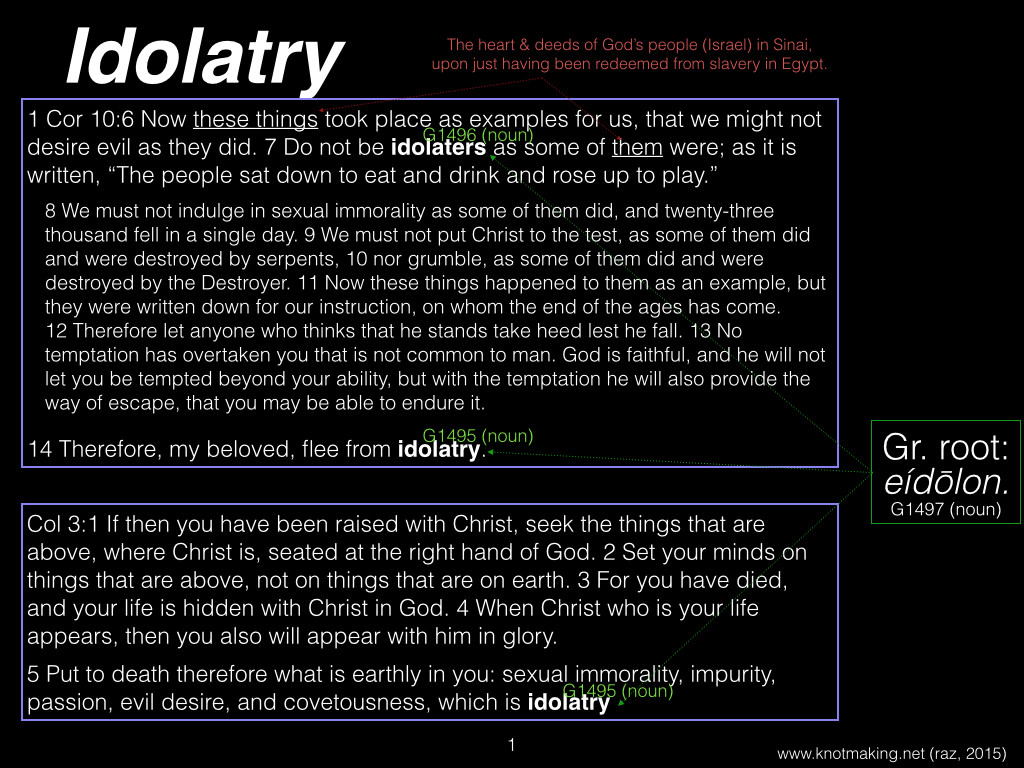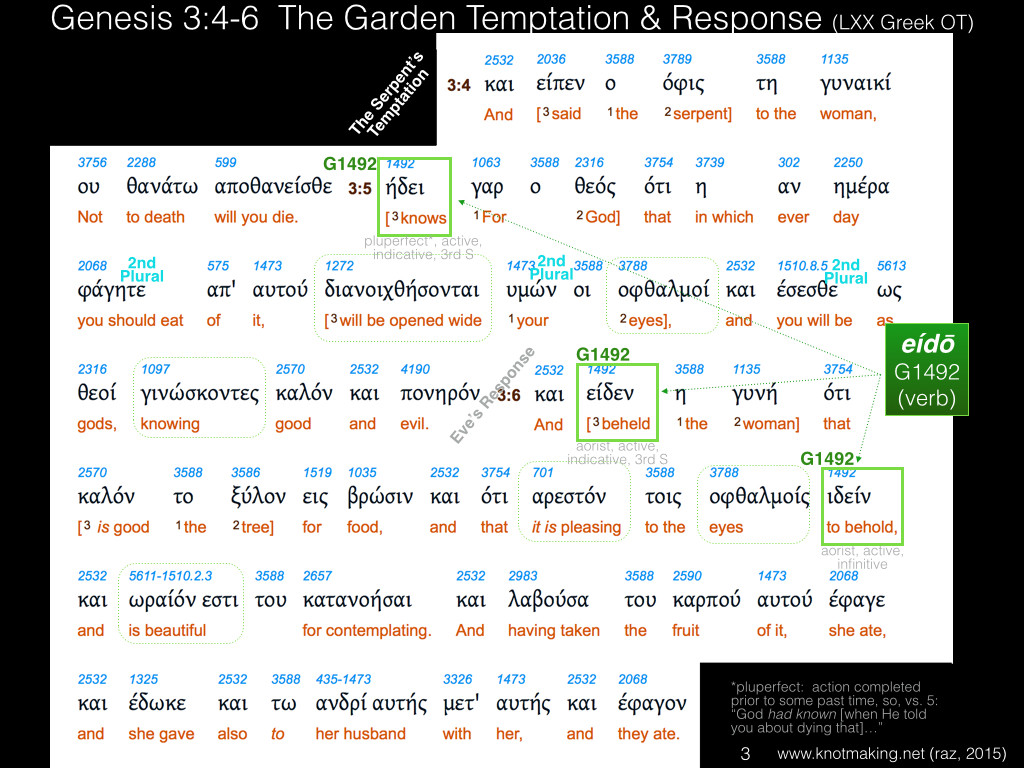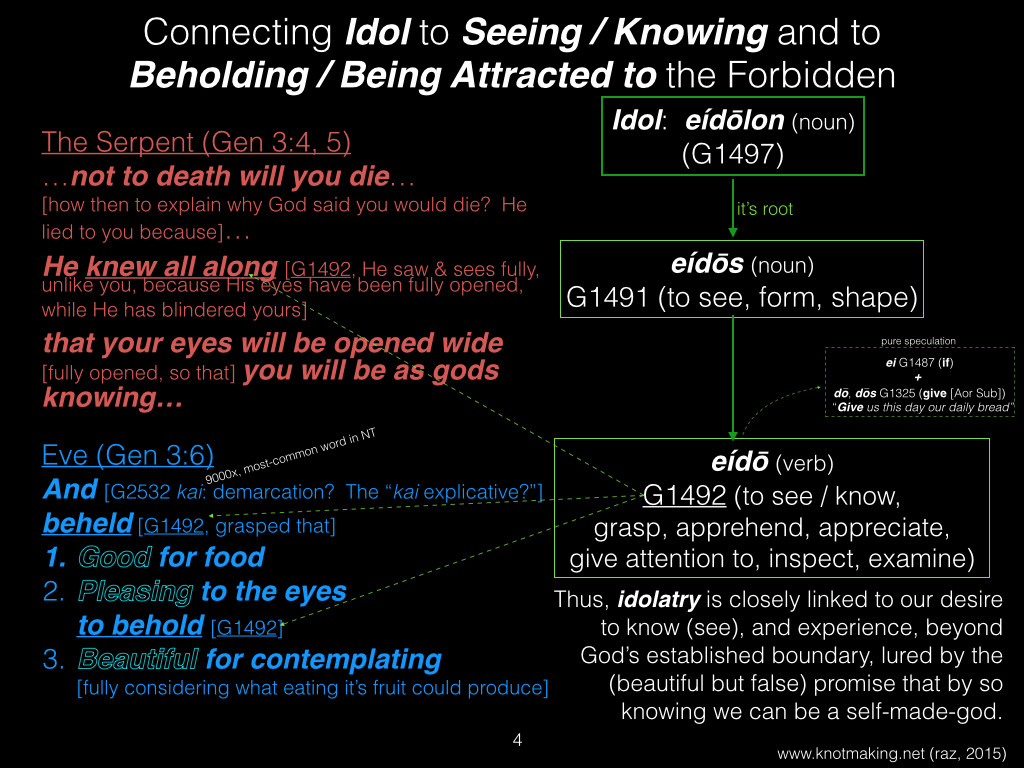God’s warning, and hatred, of idolatry is a great theme of the Old Testament. The first two of the Ten Commandments are a paired positive and negative command regarding idolatry:
Exodus 20:1 And God spoke all these words, saying: 2 “I am the Lord your God, who brought you out of the land of Egypt, out of the house of bondage
[Commandment 1]
3 “You shall have no other gods before Me.[Commandment 2]
4 “You shall not make for yourself a carved image—any likeness of anything that is in heaven above, or that is in the earth beneath, or that is in the water under the earth; 5 you shall not bow down to them nor serve them.For I, the Lord your God, am a jealous God, visiting the iniquity of the fathers upon the children to the third and fourth generations of those who hate Me, 6 but showing mercy to thousands, to those who love Me and keep My commandments. (NKJV)
Despite the absolute clarity, and rightful demand of God upon those Who He had just redeemed out of slavery in Egypt to be His own people, the nation Israel (as we have all done, every one of us) chose (and we continue to chose) a life dominated by idolatry. It is the poisoned nature of man’s fallen heart. Not one of us is exempt; it is the essence of self-worship, seeking to manage “life” for our ambitions.
And for that fallen heart in all us, there is no cure, and no future but death and permanent separation from God. (Thank God, there is a new heart, given by Grace alone–but that is the subject for another discussion).
Idolatry was not solely (or ‘souly’) an Old Testament problem. Consider just two passages below from the Epistles to the Corinthians and Colossians: The Greek word from which we get “idol” is, as shown above, “eidolon.” So our English word “idol” is a transcription of the original, not a translation.
The Greek word from which we get “idol” is, as shown above, “eidolon.” So our English word “idol” is a transcription of the original, not a translation.
Let us do a kind of archaeology–digging for ancient, root meaning–in the word “idol.” For this we will use a simple tool known as a “Strongs Number,” named after its creator James Strong (below): As seen above, the Greek word for idol, “eidolon” (Strongs Number G1497), comes from the root word “eidos” is a noun which refers an observed shape, an appearance, a form, a visual image. An “eidos” is what our eyes and mind ‘tell’ us countless times a day about the shape and things of the world in which we live. The verb form of “eidos” is “eido,” which describes our process of seeing, and which is freighted with the deeper aspects of seeing, namely, knowing, understanding, apprehending. It also carries with it (depending on the context) the idea of giving attention to something as in inspecting or examining it, as one might do of something beautiful, even alluring.
As seen above, the Greek word for idol, “eidolon” (Strongs Number G1497), comes from the root word “eidos” is a noun which refers an observed shape, an appearance, a form, a visual image. An “eidos” is what our eyes and mind ‘tell’ us countless times a day about the shape and things of the world in which we live. The verb form of “eidos” is “eido,” which describes our process of seeing, and which is freighted with the deeper aspects of seeing, namely, knowing, understanding, apprehending. It also carries with it (depending on the context) the idea of giving attention to something as in inspecting or examining it, as one might do of something beautiful, even alluring.
Turning now to the connection between seeing (“eidos”) and idolatry, let us go back to the beginning. In the dateless past, there was a special Garden (Eden), in which a man (Adam) and a woman (Eve) lived in sinless innocence in the visible presence and communion with God Himself. That Garden had an untold number of vegetables and fruits to provide physical sustenance for Adam and Eve. But, there was also a single tree, that contained fruit forbidden to Adam and Eve. That tree and its fruit (somehow) both represented and had to capacity to provide knowledge of good and evil.
That prohibition of that one, forbidden tree, became the test of man (and woman).
The below chart is an interlinear text of three key verses of the Bible from the Book of Genesis some time after God had established the boundaries of the Garden to Adam and Eve. Chapter 3 of Genesis begins with a mysterious speaking creature called “the serpent.” Below, in verses 4 and 5, we have recorded his alluring message to Eve, beginning with “he said:” In verse 4, the serpent claims that God had lied to Adam and Eve regarding the consequences of eating the forbidden fruit, namely: when God (in the previous chapter) had clearly warned Adam that the consequences of such eating would be (literally) “dying you will die,” here the serpent cunningly twists, distorts, and obscures God’s warning by saying that eating the fruit will not lead “to death,” meaning, apparently, the cessation of existence as a being. (This distortion was a lie with some truth in it, which is always the case with distortion: yes, eating the fruit would not extinguish one’s existence, and tragically so, but it fundamentally changes the essence of one’s being).
In verse 4, the serpent claims that God had lied to Adam and Eve regarding the consequences of eating the forbidden fruit, namely: when God (in the previous chapter) had clearly warned Adam that the consequences of such eating would be (literally) “dying you will die,” here the serpent cunningly twists, distorts, and obscures God’s warning by saying that eating the fruit will not lead “to death,” meaning, apparently, the cessation of existence as a being. (This distortion was a lie with some truth in it, which is always the case with distortion: yes, eating the fruit would not extinguish one’s existence, and tragically so, but it fundamentally changes the essence of one’s being).
The serpent then immediately addresses, in verse 5 above, the obvious question of how to reconcile his twisted characterization of what God had said with what God had actually said. He does this by using our root word for “idol”–“eidos”–referencing God’s knowing, and specifically God’s secret knowing which the serpent will now unveil to Eve, namely: that it is God who has distorted reality to Adam about “death,” and He has done so because He wants to hold down, in a sense enslave, Adam by keeping him (and Eve) from full knowledge by forbidding the fruit on that tree of knowledge. And, so, by eating the forbidden fruit, the serpent lies, Eve you can be not under God’s boundaries but emancipated and like a god yourself.
Verse 6 tells us what happened, and does so by twin usage of our root word for “idol” as shown in the above chart. Even beheld (studied, admired) that which God had forbade, and concluded that the forbidden fruit was worthy of being known, and so took it off the tree and took it into her body and being, and gave it to her man Adam, who did the same despite, by then, knowing its consequences. (And like men ever since, Adam was inclined to choose the woman over God).
The chart below summarizes this connection between “seeing” and “idolatry.” It was “seeing”–Eve’s first act in response to the serpent’s first act of “speaking”–that was the act of idolatry. We have been making that same choice, as the children of Eve (and Adam), ever since.